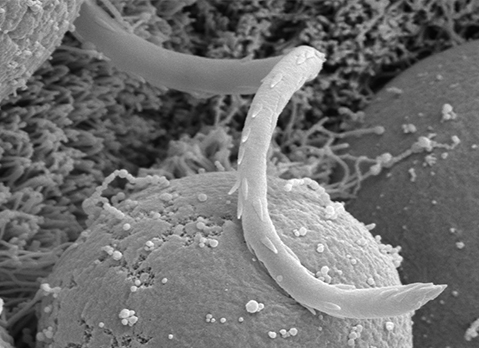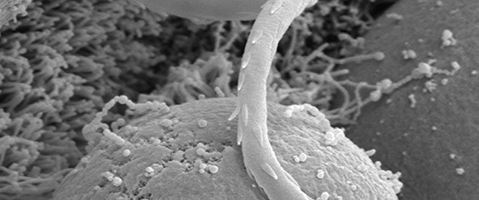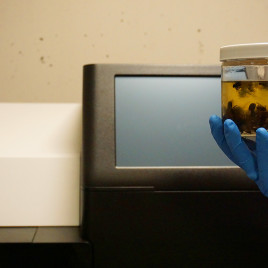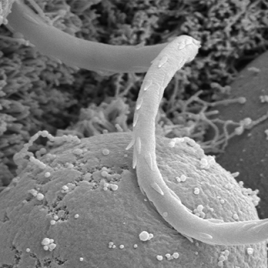
The corkscrew-shaped Helicosporidium is a parasite that has its origins as a green alga. (Photo credit: Drion Boucias, University of Florida, via UBC)
A new genomics study shows how a free-living, photosynthetic alga – that is, a type of green pond scum – evolved into an insect parasite that kills juvenile blackflies, caterpillars, beetles and mosquitoes. The sequenced genome of Helicosporidium shows that it kept nearly all its genes except those required for photosynthesis when it made the transition into a parasite at some point in the last 100 million years. Understanding the evolution of such parasites could help those hoping to use them for insect control.
Original research paper published in the the journal PLOS Genetics on May 14, 2014.
Names and affiliations of selected authors



